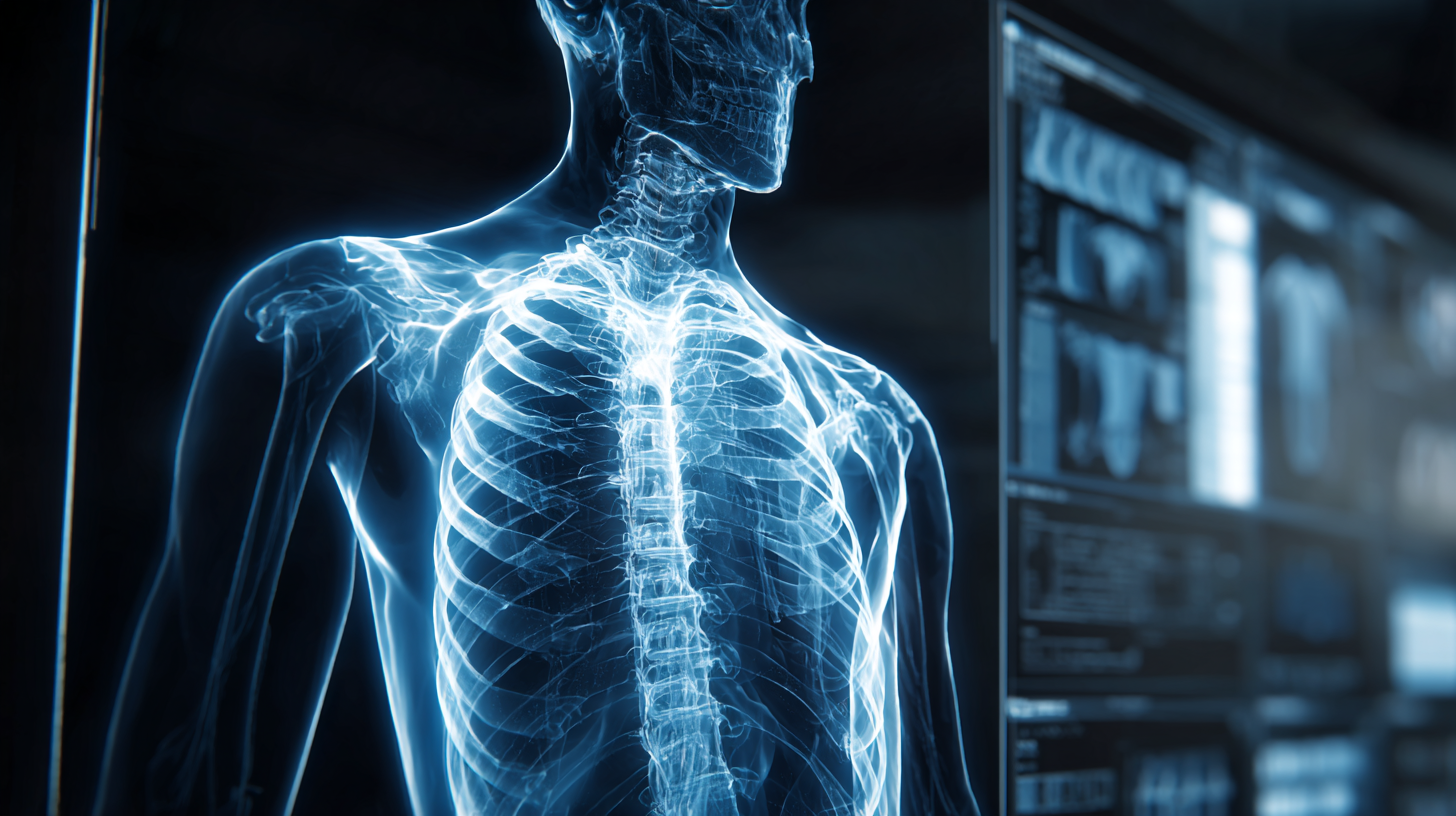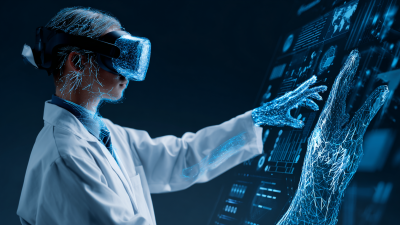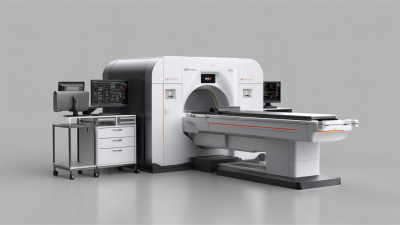The evolution of imaging scanner technology has profoundly influenced the landscape of modern healthcare, integrating advanced methodologies that enhance diagnostic accuracy and patient care.
 Imaging scanners, ranging from traditional X-rays to cutting-edge MRI and CT technologies, have transformed the way medical professionals visualize and analyze the human body.
This advancement not only accelerates the diagnostic process but also contributes to personalized treatment strategies, ensuring that health interventions are both timely and effective.
As we delve into the progression of these technologies, it is essential to consider their multifaceted impact on healthcare outcomes, patient experiences, and the overarching healthcare system.
By examining the technological innovations and their applications in clinical settings, we can appreciate how imaging scanners are not merely tools but vital components that shape the future of medicine.
Imaging scanners, ranging from traditional X-rays to cutting-edge MRI and CT technologies, have transformed the way medical professionals visualize and analyze the human body.
This advancement not only accelerates the diagnostic process but also contributes to personalized treatment strategies, ensuring that health interventions are both timely and effective.
As we delve into the progression of these technologies, it is essential to consider their multifaceted impact on healthcare outcomes, patient experiences, and the overarching healthcare system.
By examining the technological innovations and their applications in clinical settings, we can appreciate how imaging scanners are not merely tools but vital components that shape the future of medicine.
The historical development of imaging scanner technology in healthcare has been a remarkable journey, shaping the way medical diagnostics are performed today. From the early x-ray machines invented in the late 19th century to the more advanced magnetic resonance imaging (MRI) and computed tomography (CT) scanners, each technological leap has provided healthcare professionals with invaluable tools for diagnosis and treatment. The introduction of ultrasound technology in the 1950s marked another significant progression, allowing for non-invasive imaging of soft tissues.
Tips: When exploring imaging scanner technology, consider the advancements in digital imaging. This shift not only enhances image clarity but also enables quick sharing and collaboration among medical professionals. Furthermore, staying updated on technological innovations, such as artificial intelligence integration, can optimize diagnostic accuracy and patient outcomes.
As imaging techniques evolved, so did their applications in healthcare. The transition from film-based imaging to digital formats allowed for greater precision and efficiency, ultimately improving patient care. Contemporary scanners, now capable of producing 3D images and real-time data, empower physicians to make informed decisions with unprecedented speed.
Tips: It’s crucial for healthcare institutions to invest in training staff on these modern imaging technologies. Proper training can significantly reduce errors and enhance the overall workflow in medical settings. Additionally, considering the cost of maintenance and upgrades can ensure that these vital tools remain at the forefront of patient care.
The evolution of imaging scanner technology has significantly transformed modern healthcare, improving diagnostics and patient outcomes. Key innovations in imaging scanner design have emerged over the years, leading to more sophisticated equipment. From the introduction of MRI and CT scans to the latest advances in 3D and 4D imaging, each breakthrough has provided healthcare professionals with enhanced capabilities to visualize and analyze the human body in unprecedented detail.
One significant innovation is the development of portable imaging scanners, which allows for greater flexibility and accessibility in various clinical settings. These compact devices have enabled healthcare providers to perform imaging procedures in emergency situations, reducing the time required for diagnosis. Additionally, advancements in artificial intelligence are revolutionizing image analysis, allowing for quicker and more accurate interpretations.
**Tip:** When considering the purchase of imaging equipment, it’s essential to evaluate the specific needs of your practice. Prioritize versatility in design, as well as the ability to integrate with existing technologies for smoother workflows.
Furthermore, advancements in imaging scanner safety, such as reduced radiation exposure and enhanced patient comfort features, ensure a better experience for patients during procedures. Continuous innovation in materials and technology not only enhances image quality but also fosters an environment focused on patient-centered care.
**Tip:** Always stay informed about the latest developments in imaging technology, as keeping up with advancements can lead to improved service offerings and better patient outcomes in your practice.
| Year | Key Innovation | Impact on Healthcare | Technological Features |
|---|---|---|---|
| 1970 | First CT Scanner | Revolutionized diagnostic imaging with cross-sectional views | X-ray technology, digital processing |
| 1989 | MRI Technology Advances | Non-invasive imaging of soft tissues | Magnetic resonance, advanced imaging sequences |
| 2000 | PET Scanning Integration | Enhanced cancer detection and metabolic imaging | Positron emission, combined with CT |
| 2010 | 4D Imaging | Real-time imaging for motion studies | Time-resolved imaging techniques |
| 2020 | Artificial Intelligence in Imaging | Improved accuracy and efficiency in diagnoses | Machine learning algorithms, automated analysis |
Imaging scanners have revolutionized the field of early disease diagnosis, providing healthcare professionals with tools that enhance precision and speed in detecting various medical conditions. Technologies such as MRI, CT scans, and ultrasound have evolved dramatically, enabling clinicians to visualize internal structures of the body with remarkable clarity. This advancement allows for the identification of abnormalities, tumors, and other critical health issues at stages where intervention may be most effective.

Additionally, the integration of advanced imaging techniques with artificial intelligence and machine learning has further improved diagnostic accuracy. These innovations assist in analyzing large volumes of imaging data, identifying patterns that may be overlooked by the human eye. As a result, early diagnosis and timely treatment plans can significantly improve patient outcomes and reduce healthcare costs. The role of imaging scanners in modern medicine cannot be overstated; they are essential not only for diagnosis but also for monitoring disease progression and evaluating treatment efficacy, reshaping the future of patient care.
The evolution of imaging scanner technology has profoundly impacted treatment planning and patient outcomes in contemporary healthcare. As we observe World Radiography Day, it is essential to recognize the groundbreaking advancements that have emerged from Roentgen's initial discoveries. Modern diagnostic imaging techniques, particularly those enhanced by artificial intelligence (AI), have elevated the precision of imaging studies, allowing healthcare professionals to develop more tailored treatment strategies. AI-powered modalities, such as MRI, not only provide real-time insights into disease progression but also enable clinicians to predict treatment outcomes, exemplified by their application in prostate cancer prognosis.
Moreover, the integration of functional magnetic resonance imaging (fMRI) in the preoperative planning for brain tumor surgeries underscores the significance of advanced imaging technologies in complex medical scenarios. By facilitating precise localization of tumors and assessing their impact on surrounding brain functions, fMRI guides surgical interventions and enhances patient safety. This transformative role of imaging technology aligns with the global health initiative to strengthen medical imaging capacity, ensuring broader access to critical diagnostic tools. As a result, patients benefit from improved individualized care, leading to better overall health outcomes and enhanced quality of life.
This bar chart illustrates the impact of various imaging scanner technologies on treatment planning and patient outcomes. Each technology is rated on a scale from 0 to 100, with higher scores indicating a greater positive impact on healthcare effectiveness and efficiency.
The future of imaging scanner technology promises significant advancements that will profoundly impact healthcare integration. As the global portable ultrasound equipment market is projected to grow from approximately $8.42 billion in 2025 to $10.87 billion by 2033, this surge reflects a growing recognition of the need for mobile and accessible diagnostic tools in various medical settings. The increasing demand for advanced imaging technology will enhance patient care by facilitating timely and accurate diagnoses.
Tips: When considering the integration of new imaging technologies, healthcare providers should focus on user training and improving workflows to maximize efficiency. Staying updated on the newest innovations will ensure that healthcare facilities remain competitive and can meet patient needs effectively.
Additionally, the barcode scanner gun market is projected to expand at a robust compound annual growth rate of 8.3% from 2026 to 2033, signifying a strong demand across various sectors. This trend underscores the importance of technological advancements in streamlining operations not only in healthcare but also in other industries. Investing in these tools can significantly enhance data accuracy and operational efficiency.
Tips: Organizations should evaluate current processes and identify areas where barcode scanning technologies can be integrated for better inventory management and patient tracking. This proactive approach will pave the way for a more integrated healthcare ecosystem.






